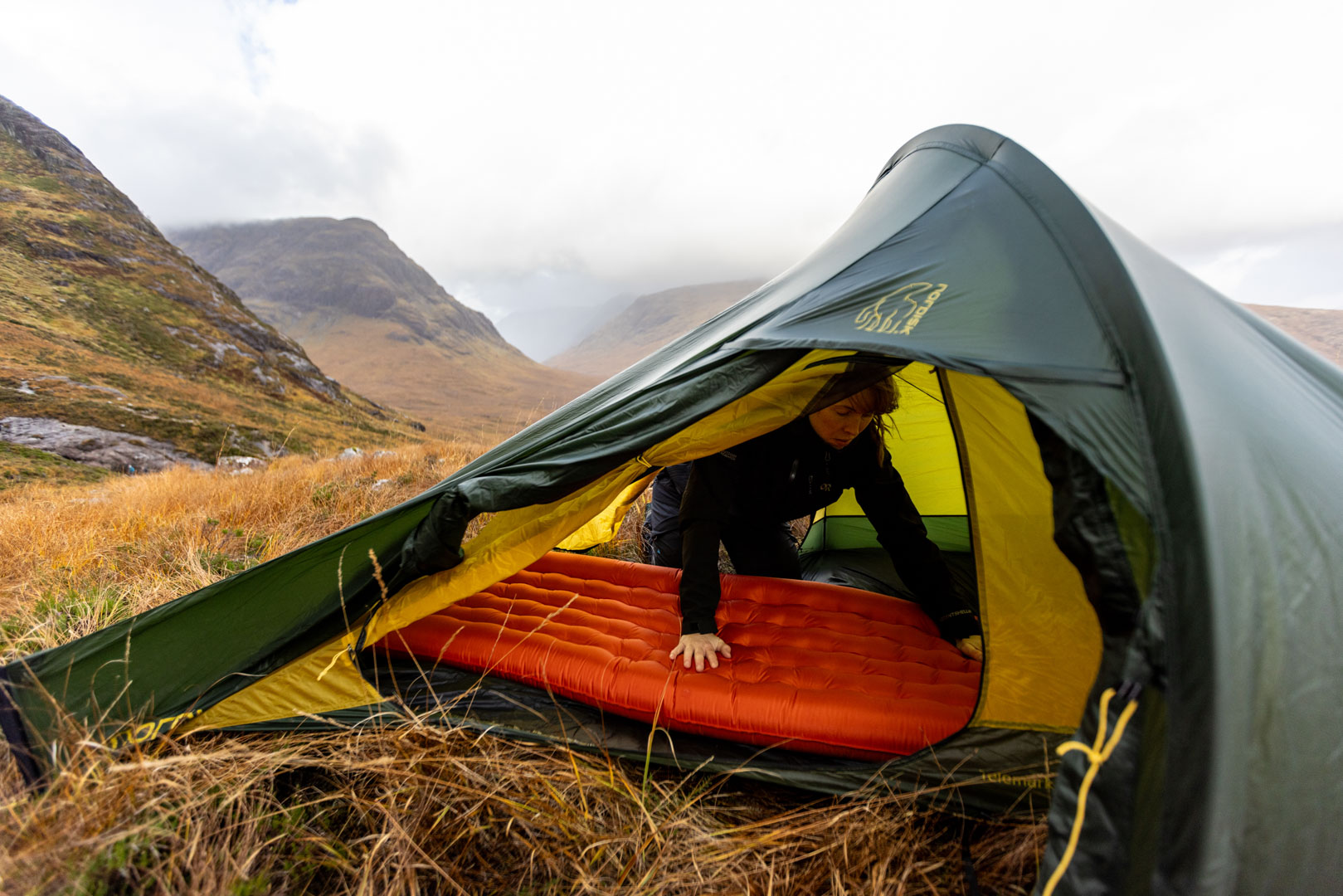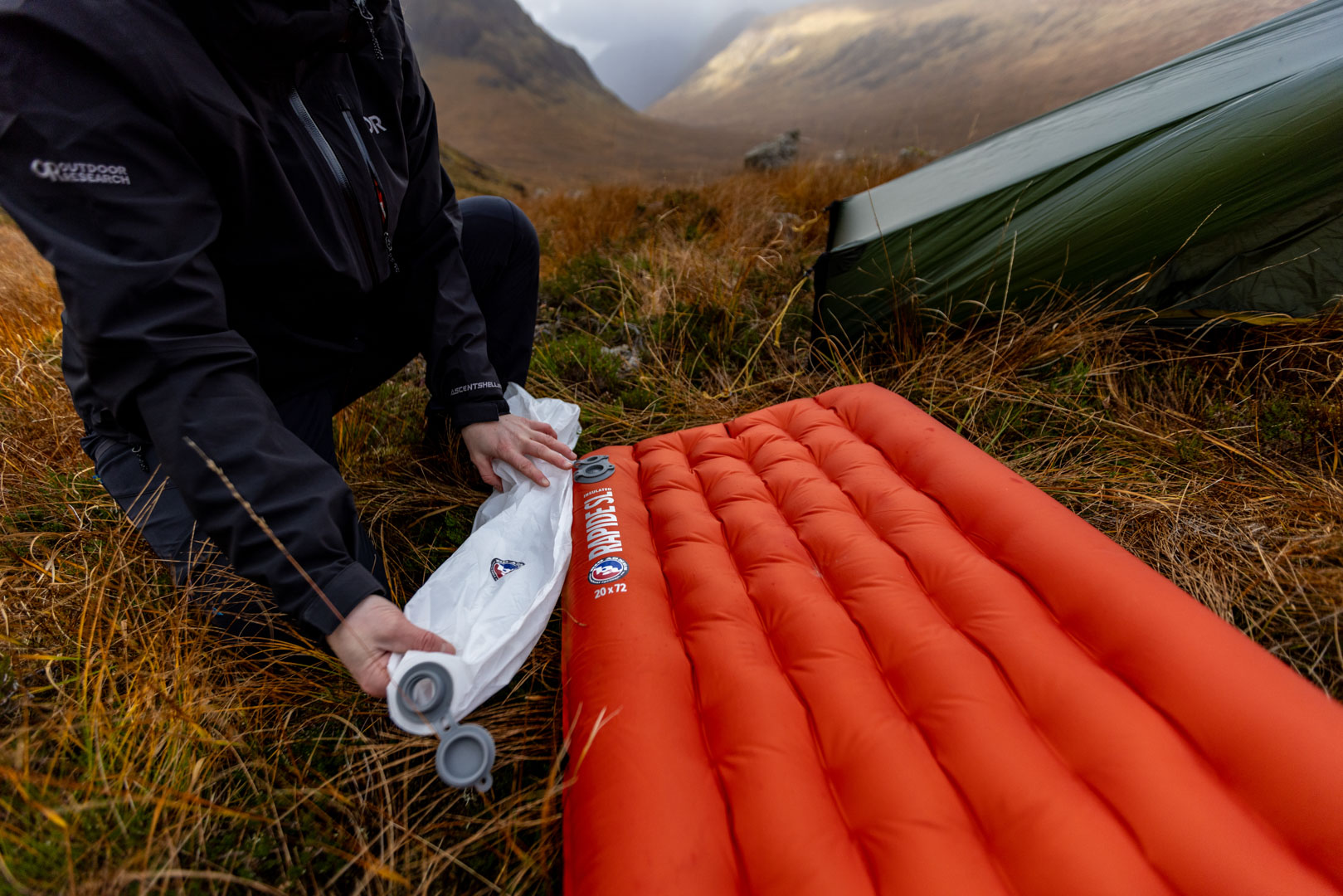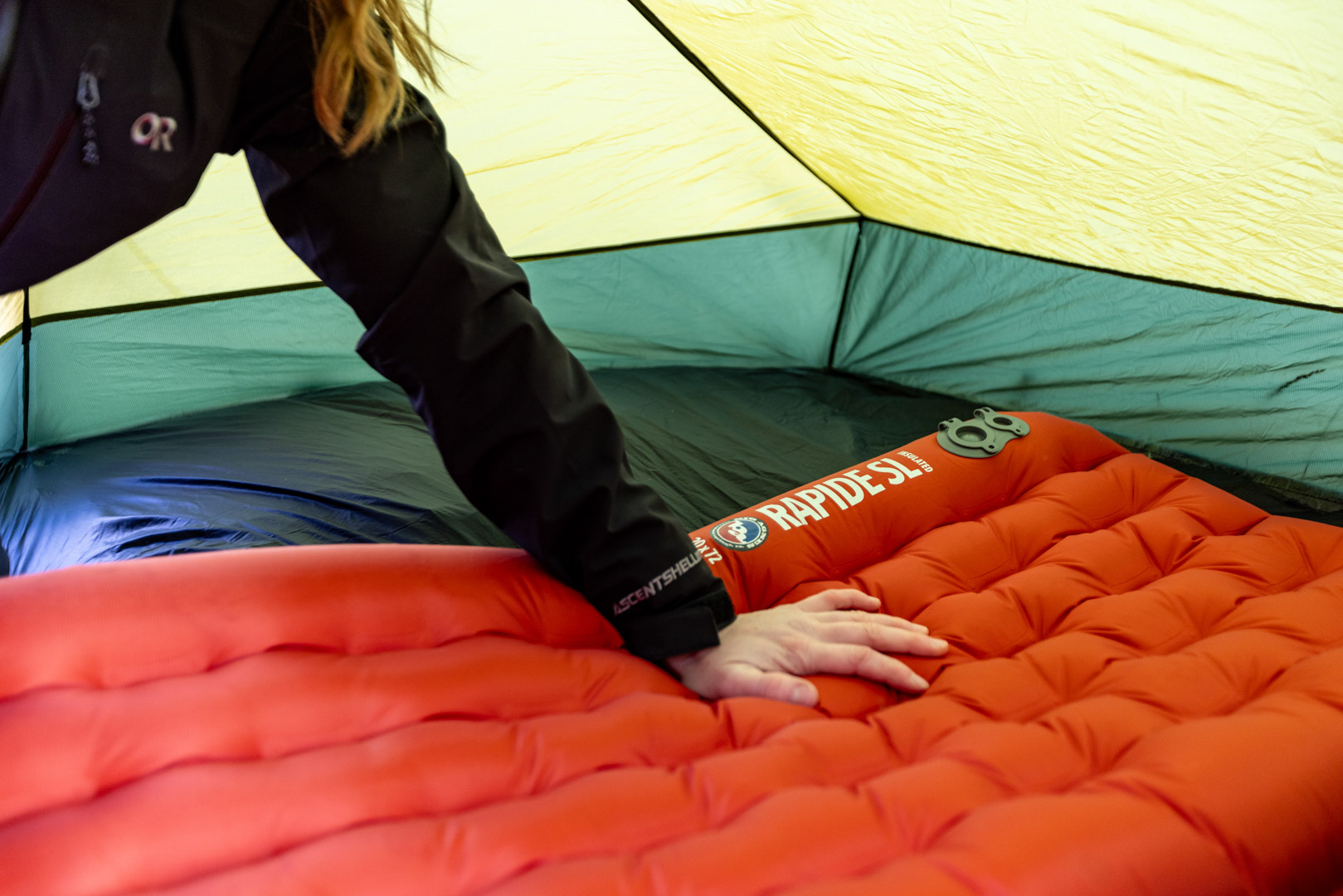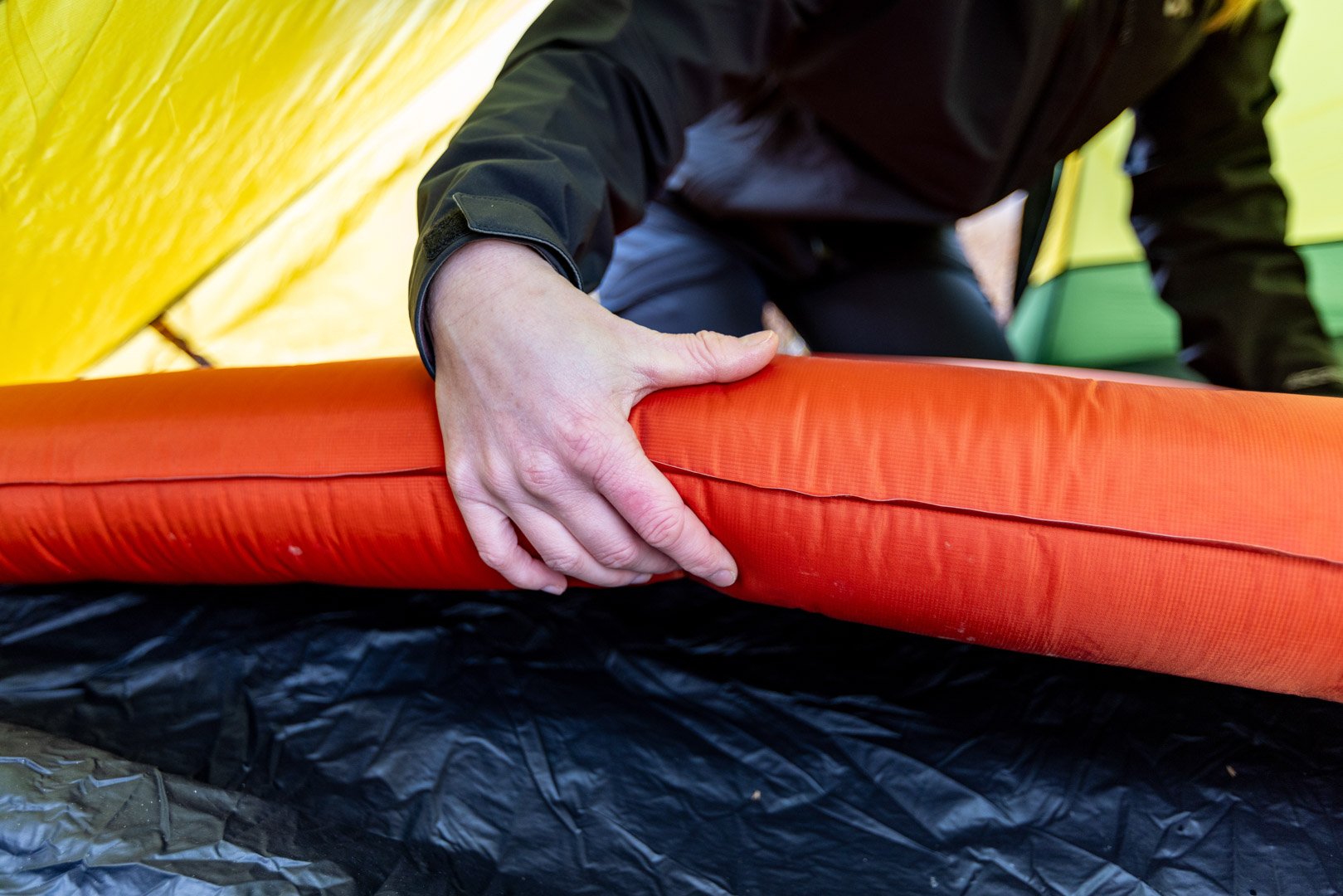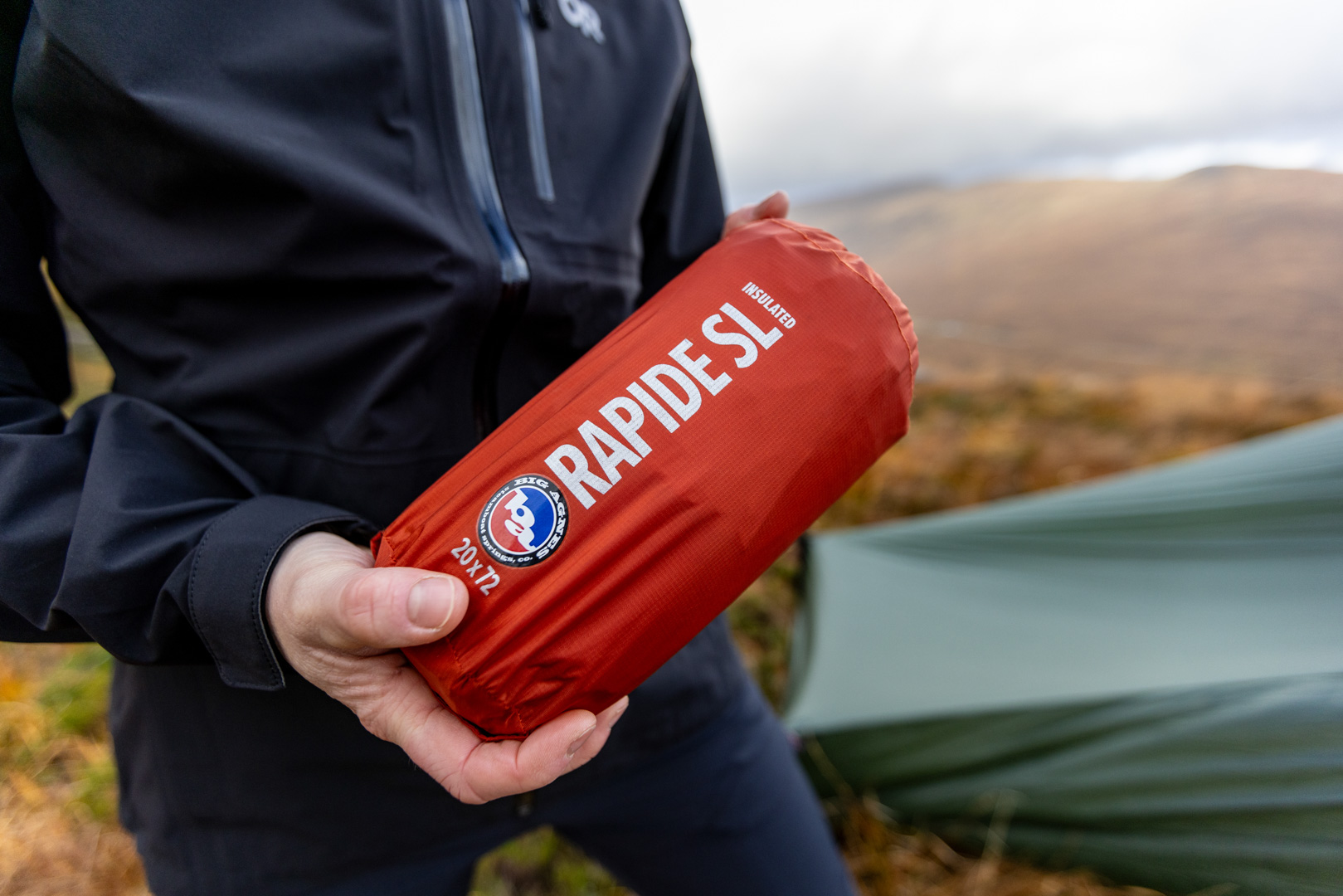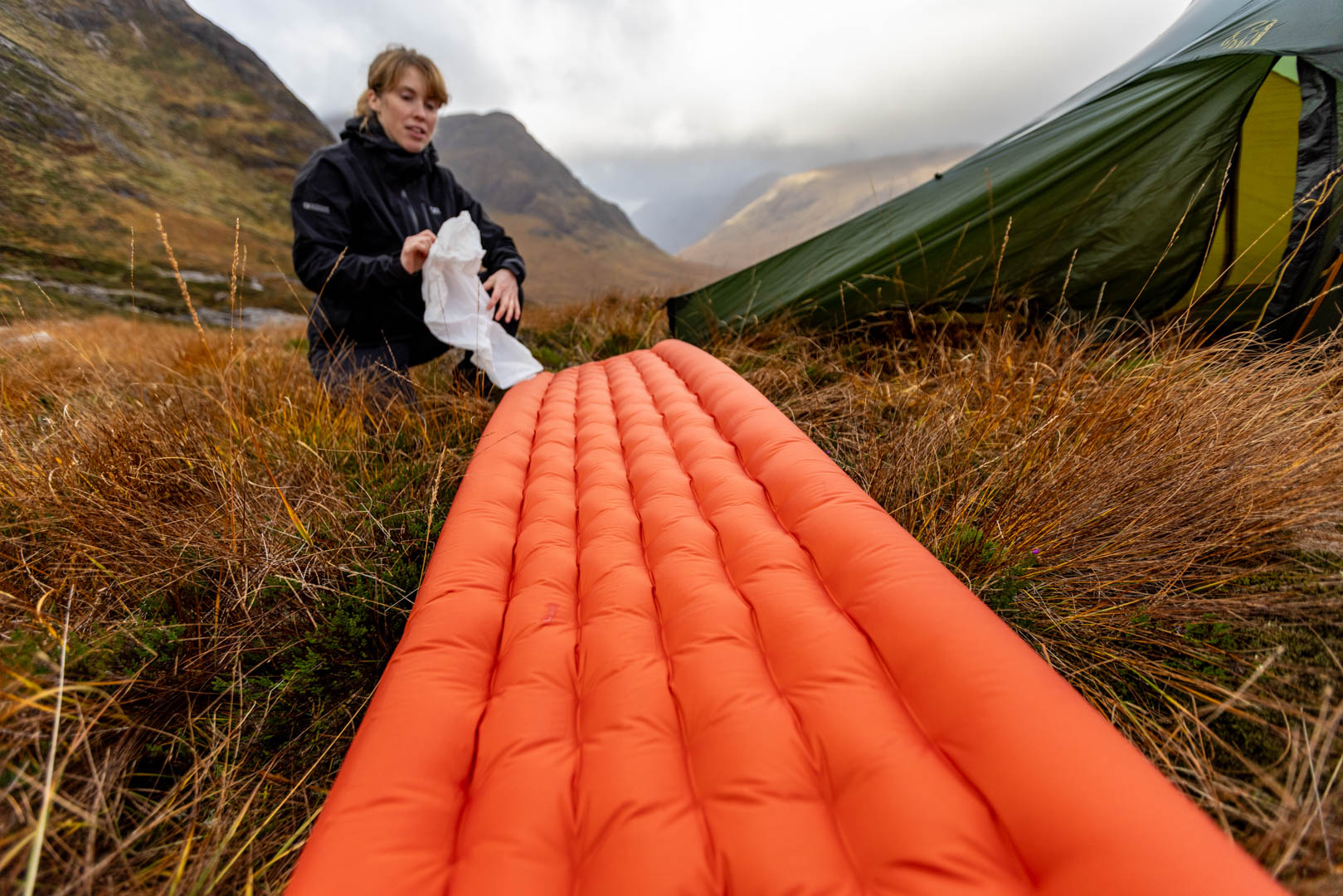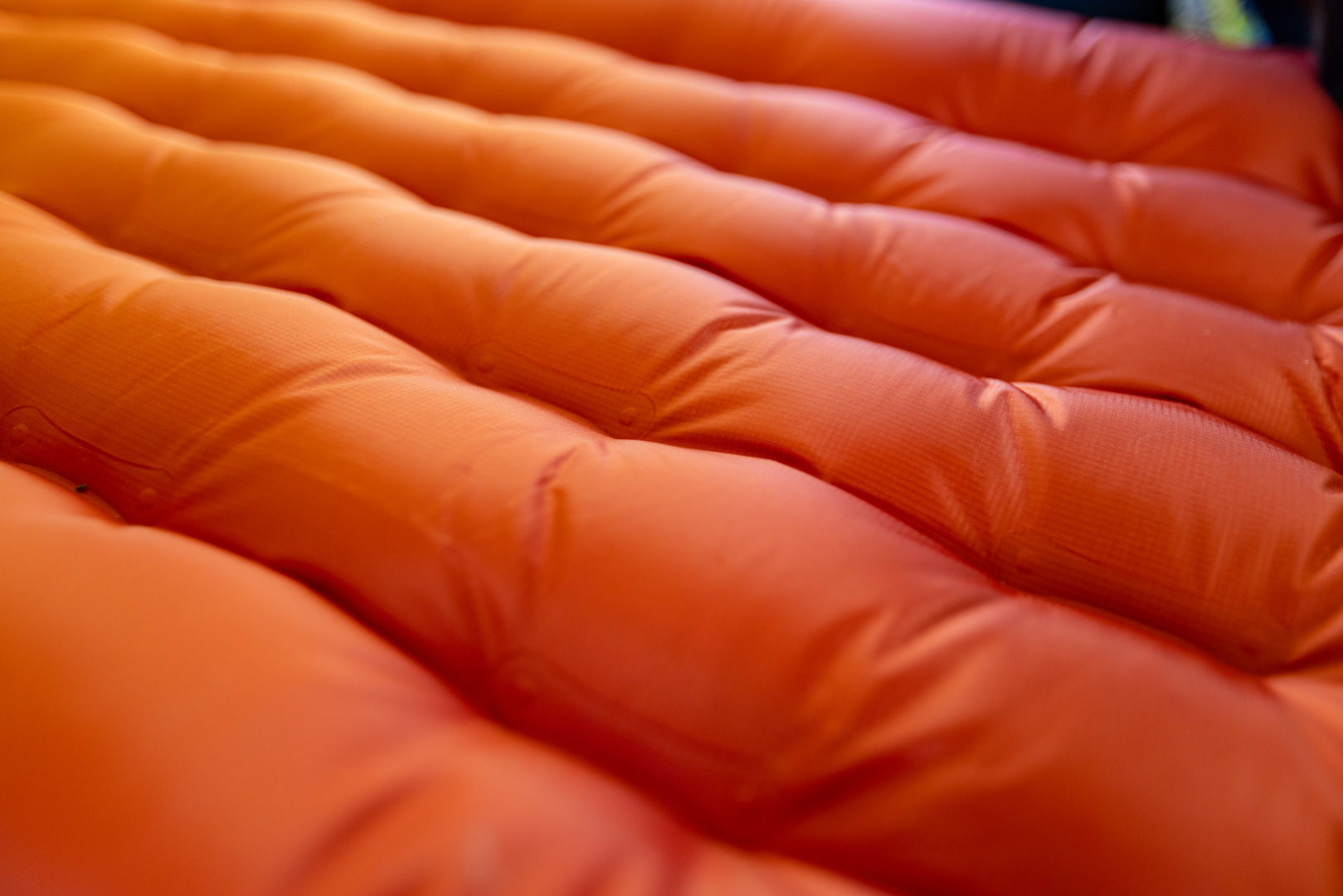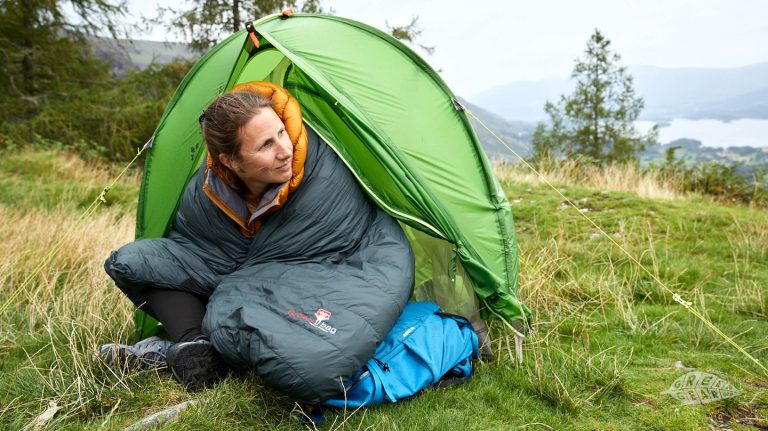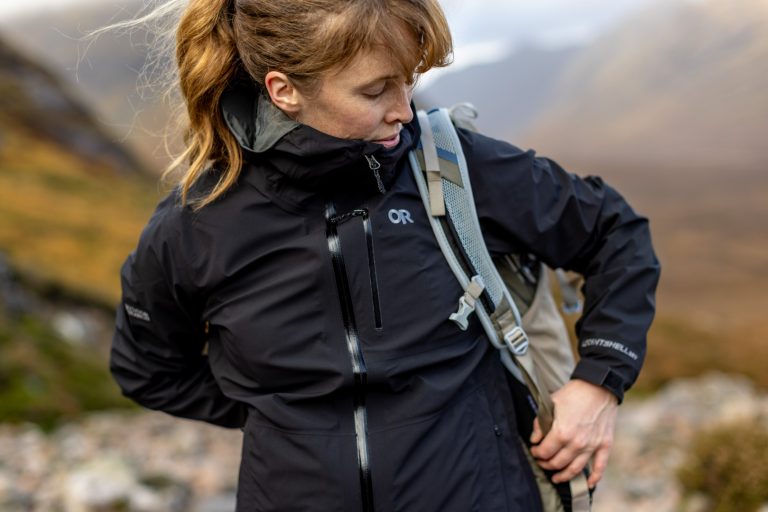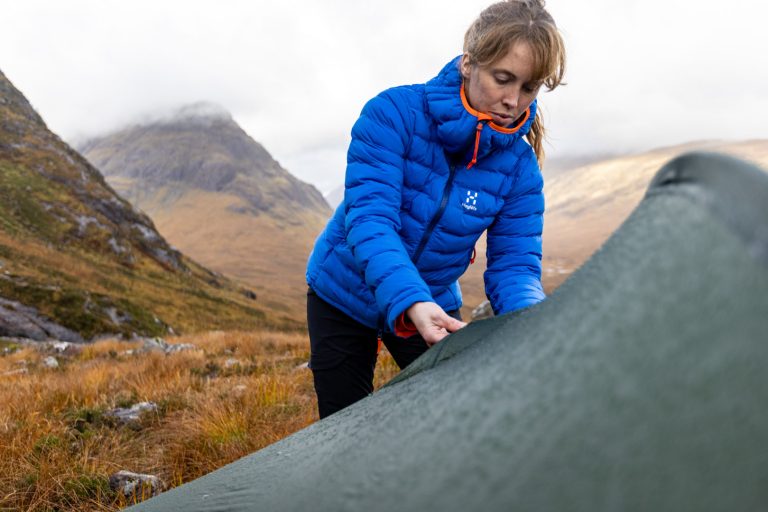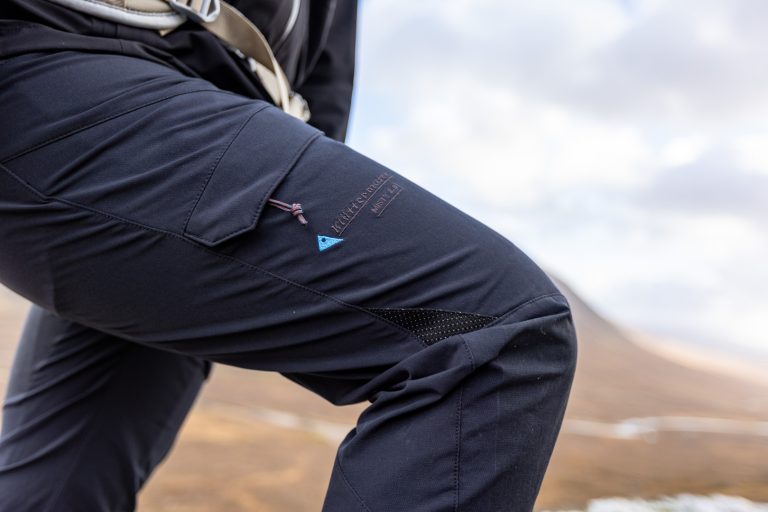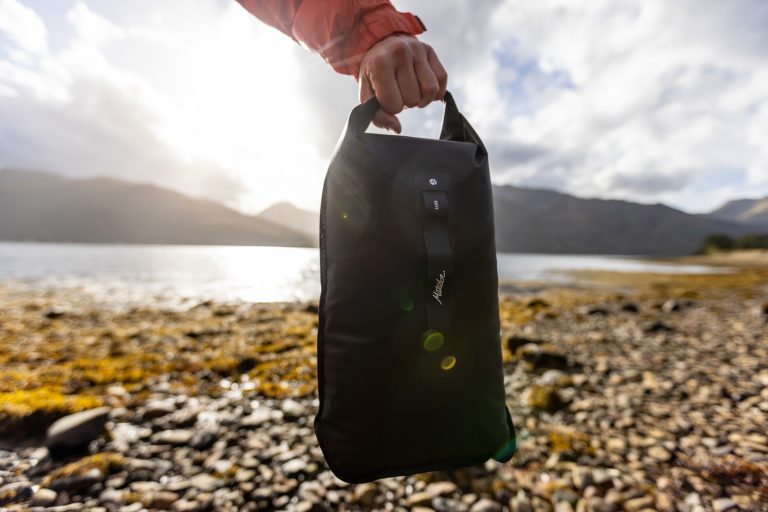I was offered two versions of this sleeping mat to review: the 25 inch by 72 inch model and the 20 x 72. Being an ultralight camper with masochistic tendencies, naturally it was the smaller one that I was drawn to.
My main ultralight mat over the years has been the Therm-a-rest NeoAir Uberlite which is no bigger than a pint glass when packed up and is commonly regarded as the lightest inflatable sleeping mat on the market. Where that falls short is that it’s not great in cold weather and it’s very thin and delicate. I’ve been starting to look for a new lightweight option recently and when I laid my hands on the Big Agnes Rapide SL in the 20 x 72 inch ‘petite’ size, my immediate thought was that I might be onto a winner.
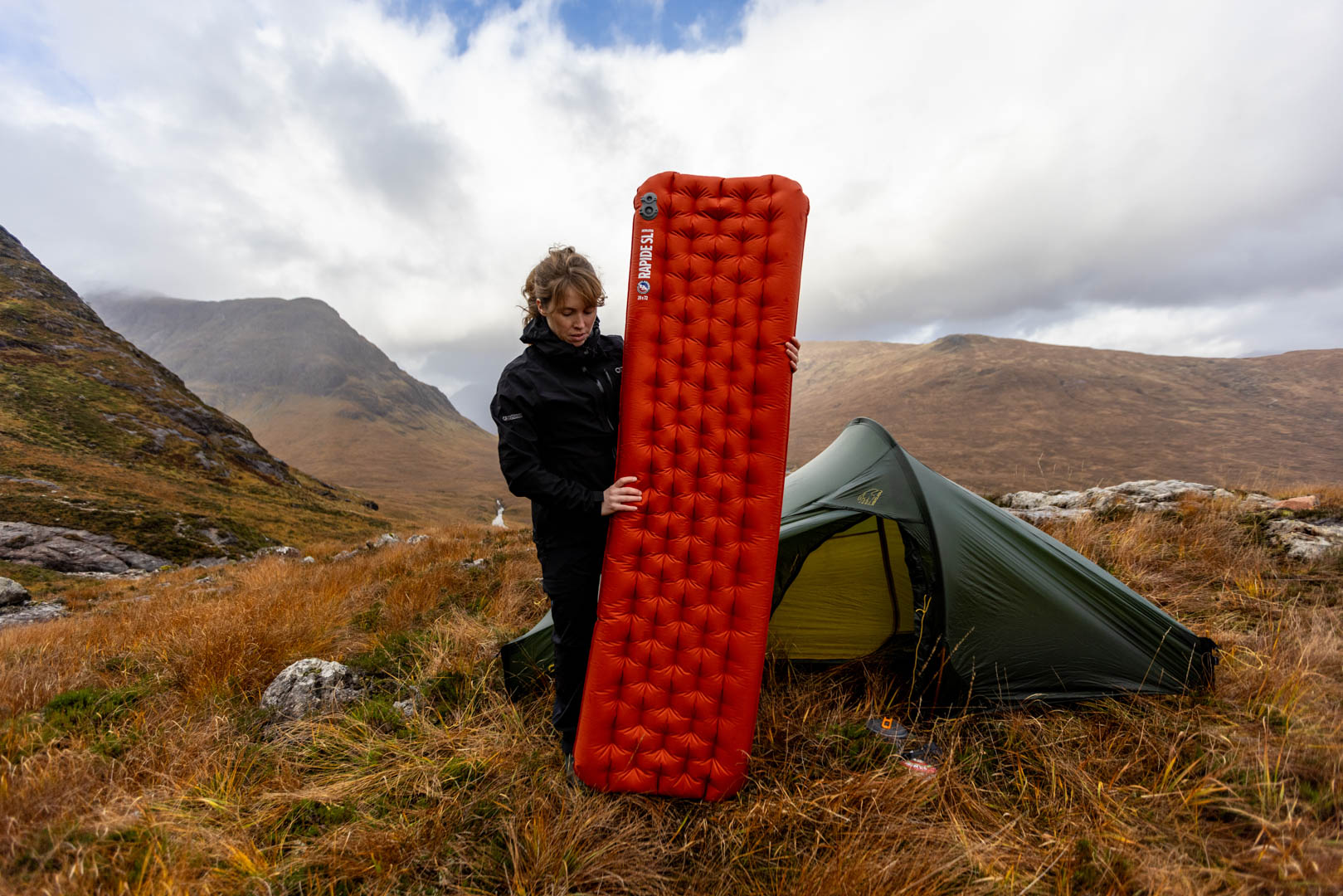
At 521g, it’s a fair bit heavier than the Therm-a-rest NeoAir Uberlite which weighs just 250g, but its packed size is only a touch bigger. It’s also insulated, coming with a double heat reflective lining and PrimaLoft fibres stuck to the walls inside it to give it a solid R value of 4.8, making it suitable for the colder edges of spring and autumn.
Performance
This is actually an updated version of the Rapide. Big Agnes say that they’ve made subtle changes to the construction and fabrics that make it both warmer and more packable. I’ve used this on a few chilly nights in autumn, but haven’t had the chance to test it out on any overly wintry feeling nights just yet unfortunately. Still, it’s been warm enough for me and I haven’t ever felt any coldness from the ground while using it so far.
Its baffle construction kind of blends both vertical and horizontal baffles, so you could say you get the best of both worlds here. Interestingly, the sides have vertical baffles that are raised and these kind of create a cradling effect to stop you from rolling off the mat. I shone a head torch behind the sleeping mat and could see that the insulation goes right to the edges, which is good.

